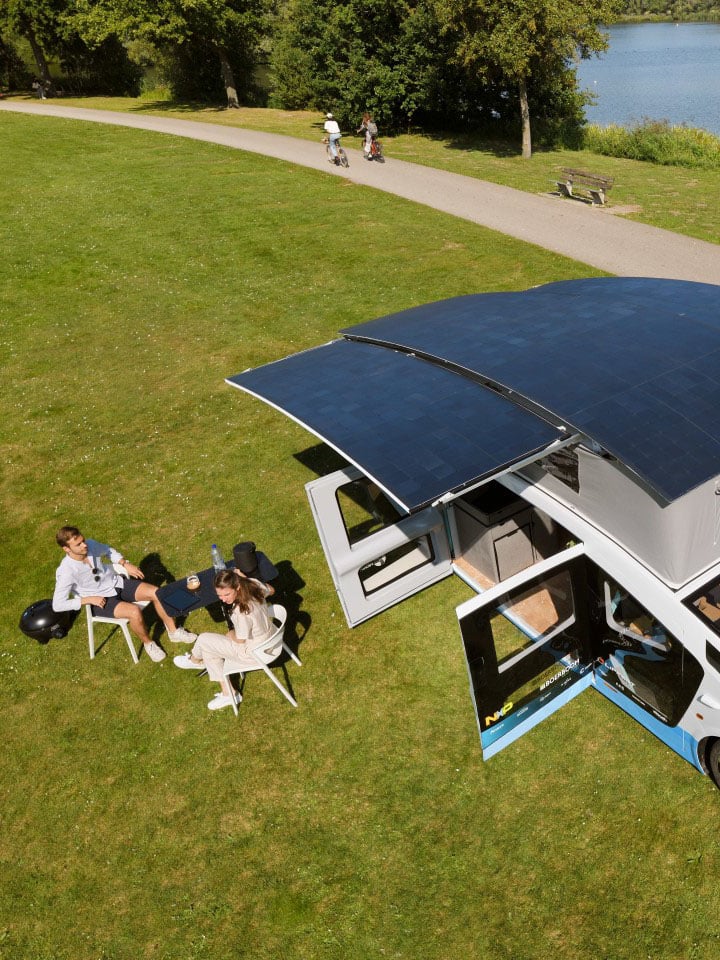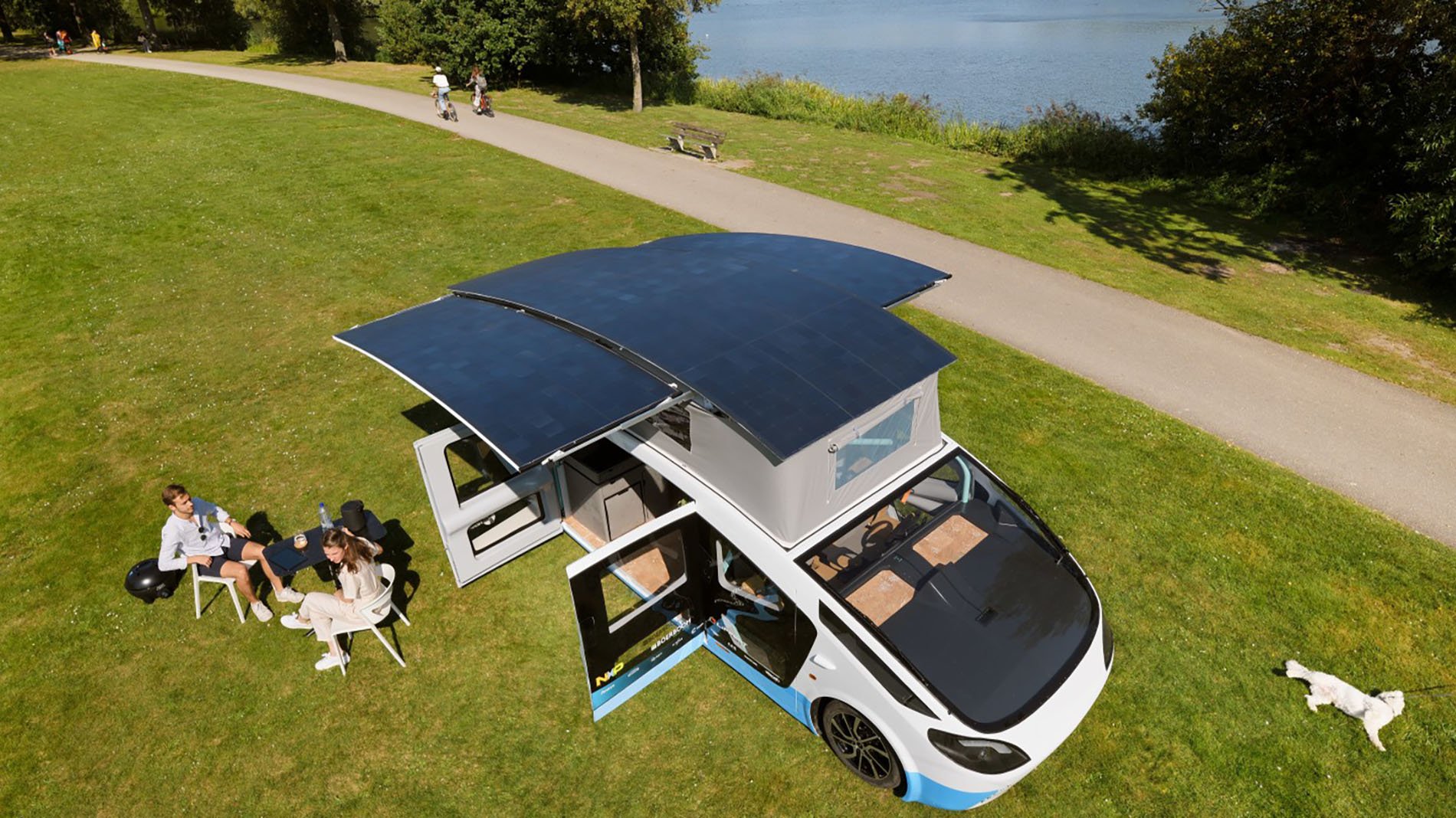This solar-powered motorhome is part of the Solar Team Eindhoven 2021 project by a group of 22 Dutch students. The team began researching solar-powered mobility for the project in September last year, and the idea for a Stella Vita was born in just two months. From November 2020 to March 2021, they completed the Stella Vita, which can reach speeds of up to 120 km/h thanks to its aerodynamic design and a weight of only 1,700 kg.
By July, the project team had entered the testing phase, and very quickly after that, the car was licensed to circulate on the road since last September.
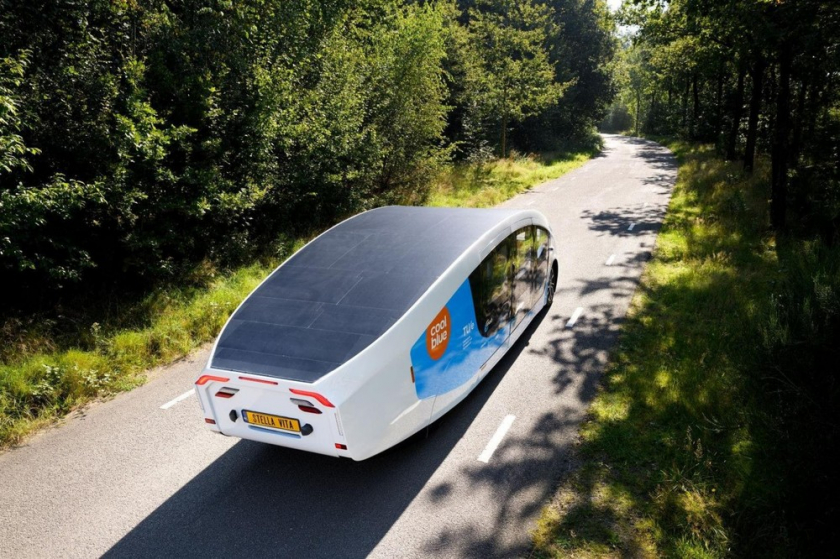
The solar panels are beautifully designed and fit nicely on the Stella Vita.
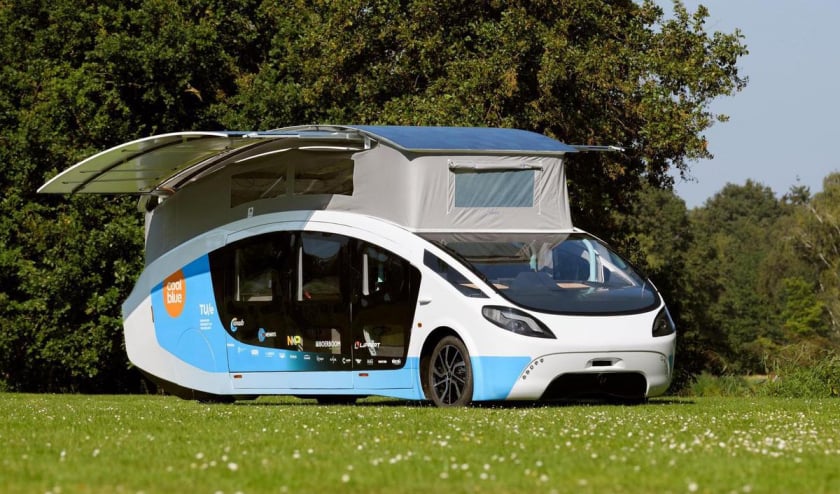
The small room inside the motorhome is fully equipped with all the necessary living facilities including a double bed, sofa, cooking area, bathroom, sink and toilet. This is a suitable space for a trip of two, however, the special thing is that they can drive, cook breakfast and watch TV using the solar panels of this car.
“Our main goal is to inspire people, the market and society to accelerate the transition to a more sustainable future,” says Tijin Ter Horst, member of Solar Team Eindhoven 2021.
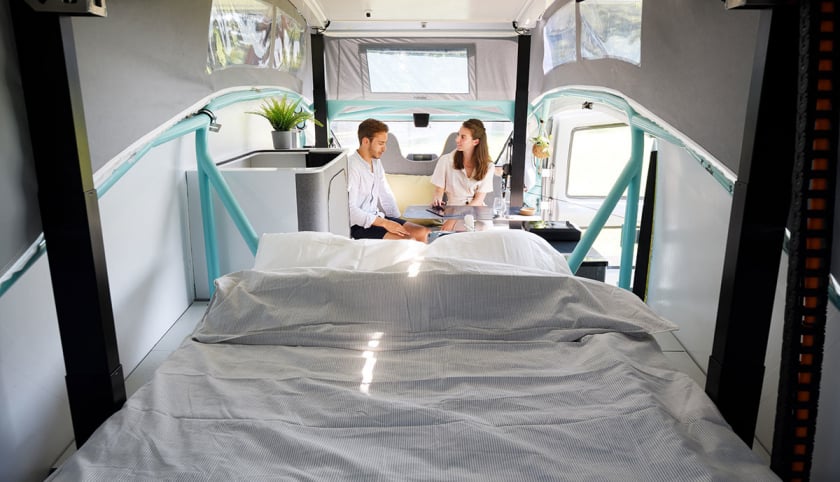
Comfortable interior of the car.
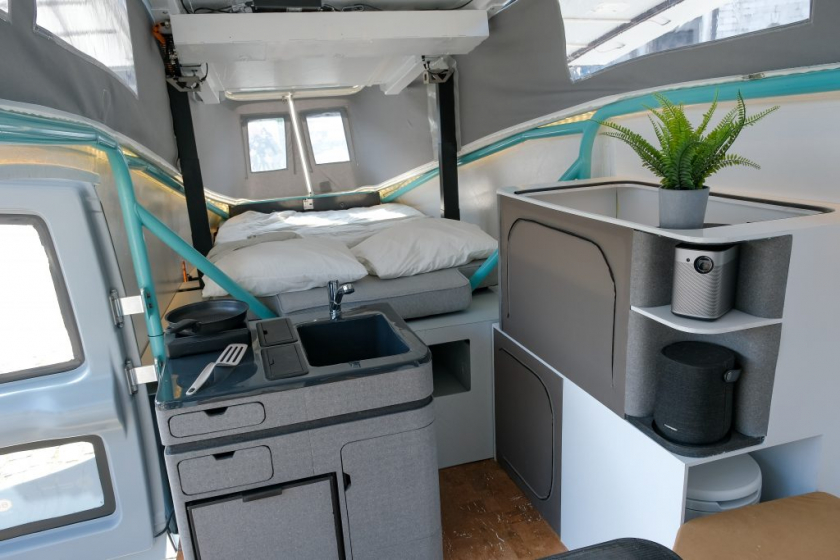
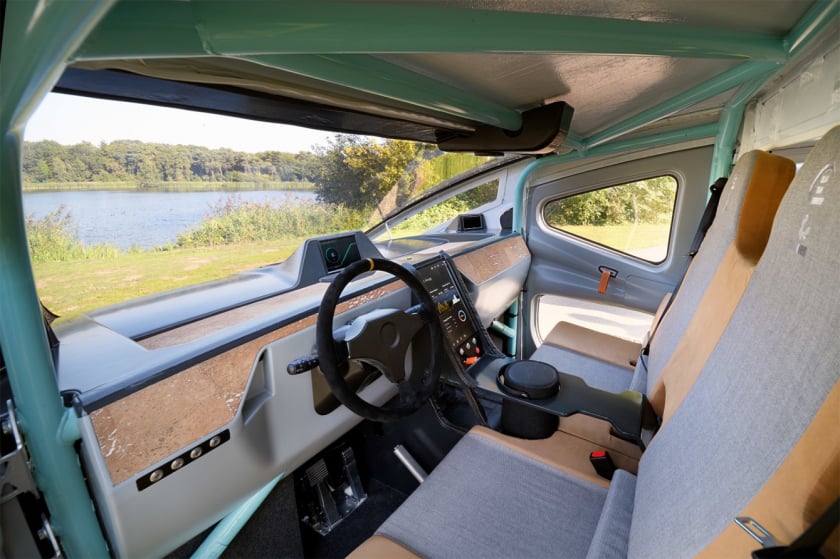
On October 19, as planned, Stella Vita started its journey on a 3,000 km journey from Eindhoven (Netherlands) to the Tarifa metropolitan area, the southernmost part of Spain with 13 stops, including Paris. However, technical problems occurred at the beginning of the trip and the motorhome had to be towed for support. After being resolved, Stella Vita continued its journey and was able to travel nearly 2,000 km without recharging or refueling.
“This car looks very special, when you drive it through European cities like Paris or some other destinations, people there will be very excited and want to take pictures of it,” Horst said.
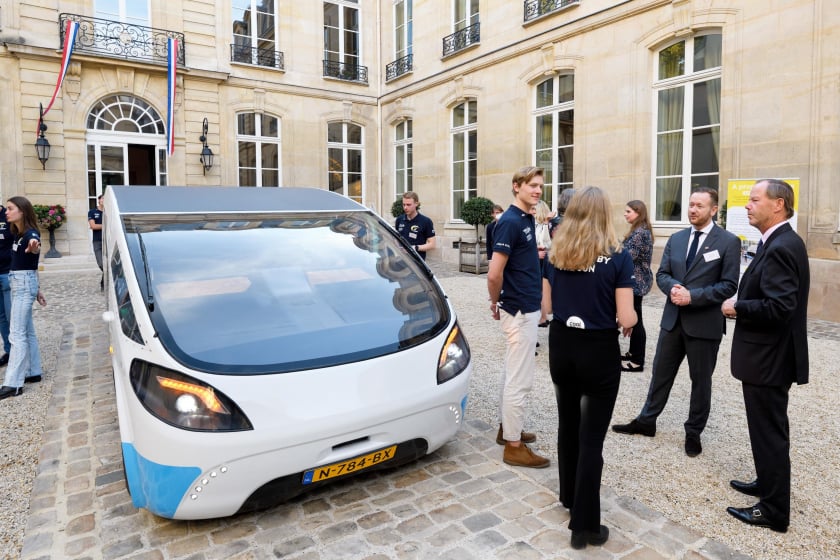
Solar Team Eindhoven visited the Dutch ambassador to France in Paris with Stella Vita.
Normally, this car can travel 600 km with 60 kWh when fully charged, even at night or when the sky is cloudy. Meanwhile, when running in sunlight, the car will have enough energy to extend the distance by 130 km. To prove this, the research team also tested driving continuously on a 300 km long road with a maximum speed of 120 km/h.
When the car is parked, the solar panels on the roof will be opened from both sides, doubling the car's solar energy absorbing surface. The area of the solar panels will then increase to 17.5 m2instead of 8.8 m2as before. When stationary, riders can also monitor energy consumption through the integrated infotainment system.
“It creates awareness of energy,” Horst adds, “You can see how much energy comes from the sun, how much energy comes from your body, or if you want to make pancakes, you can measure exactly how much energy it takes to make one pancake.”
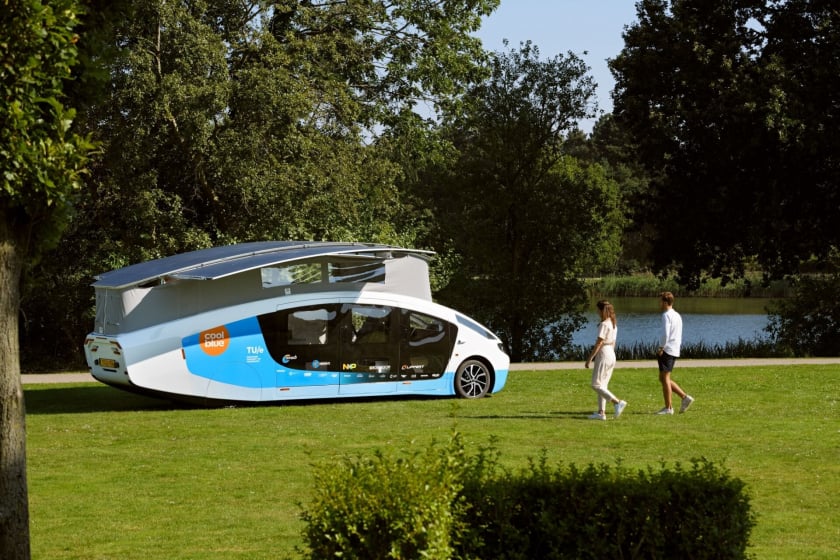
The car can extend its solar panels to absorb more energy.
According to the project team in 2021, it was time to take the next step in mobility by creating a solar-powered vehicle that people could actually live and work in. “The solar cars we’ve built before can generate so much energy that they can even power other electric vehicles,” Horst said. “That’s why we came up with the idea of using the extra energy to power other activities on the car.”
This is not the first solar-powered car created by the Eindhoven University of Technology in the Netherlands, previously, the Solar Team Eindhoven research group in 2013 also created the world's first solar-powered family car and this project has continued to be carried out since then.





